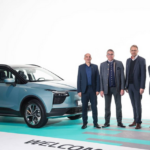Electric vehicles (EVs) are becoming increasingly popular as people look for more sustainable transportation options. One of the key factors to consider when owning an EV is the cost of charging. Luckily, several energy providers now offer EV-focused tariffs for as low as 7p per kWh during off-peak hours, typically between 12am and 7am.
By taking advantage of these low-cost tariffs and setting your EV to charge during off-peak times, you can save money on charging. For example, using a 7kW home charger could provide you with close to 195 miles of range at a cost of less than 2p per mile. This makes owning and operating an EV more cost-effective than ever before.
When it comes to charging your EV, it’s important to understand the different plug types available. Just like the VHS vs. Betamax battle of the past, there are competing standards for EV charging plugs. The Nissan Leaf, for example, originally came with a Type 1 ‘J-Plug’ for AC charging and a Chademo plug for DC rapid charging. In the EU, the Type 2 Mennekes plug became the standard for AC charging, while the Combined Charging System (CCS) plug is used for DC rapid charging.
When you arrive at a public charging station, you may encounter different plug types such as Chademo plugs (bright blue) and CCS plugs (plain white). It’s important to familiarize yourself with these different plug formats to ensure you can charge your EV efficiently wherever you go.
Overall, owning an EV can be a cost-effective and environmentally-friendly choice. With the right charging setup and knowledge of different plug types, you can enjoy the convenience and benefits of electric driving.






